Belarus Tour Guide: Ideas for Your Trip!
What to see in Mozyr: Streets running through ravines, a temple-museum and a unique tram service
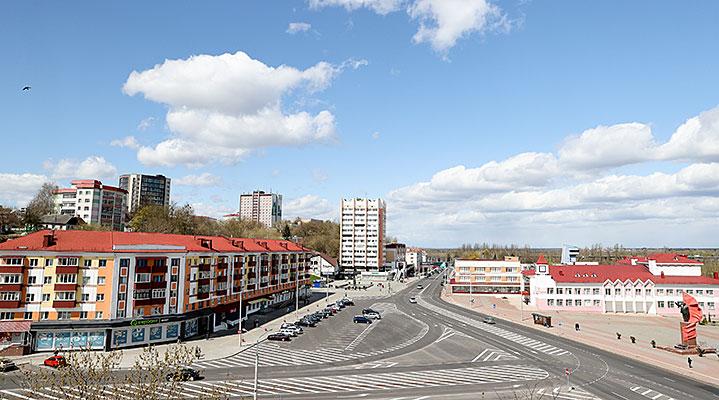
Sprawling on the banks of the Pripyat River, Mozyr is one of the oldest cities in the Polesie region, with streets running through deep ravines. It is home to the largest river port in Belarus. Romantically called "a city on seven hills", the city was first mentioned in historical chronicles in 1155 when Prince Yuri Dolgoruky of Kiev gave Mozyr to Prince Svyatoslav Olgovich of Novgorod-Seversk.
Scholars are still arguing as to the origins of the city name. Some say that it comes from the Finno-Ugric word "mosar" - "swamp; a swampy lowland overgrown with grass and bushes." Others assume that the toponym "Mozyr" derives from the ethnonym "Mazur", but scholars believe that the name of the city is older than the name of the ethnicity. A number of versions associate the name with the words of Turkic-Iranian origin: "mozra" - a village, a hamlet; "mozor", "mazar" – a grave, a hill; "mozhary" – a hilly land.
Mozyr used to be part of the principalities of Kiev, Chernigov and Turov. Since the middle of the 14th century it was part of the Grand Duchy of Lithuania, since 1569 – Rzeczpospolita. In 1577, the city received the right to self-government. The document granting this privilege is now kept in the National Historical Archives of Belarus.
After the second partition of Rzeczpospolita in 1793, Mozyr came under the jurisdiction of the Russian Empire. In Soviet times, it was the capital of the Polesie region of the BSSR for sixteen years. In 1954 it became the district capital of Gomel Oblast. Now it is a large industrial city with a population of over 100,000, a beautiful place, which is often called the pearl of Polesie.
Mozyr ravines
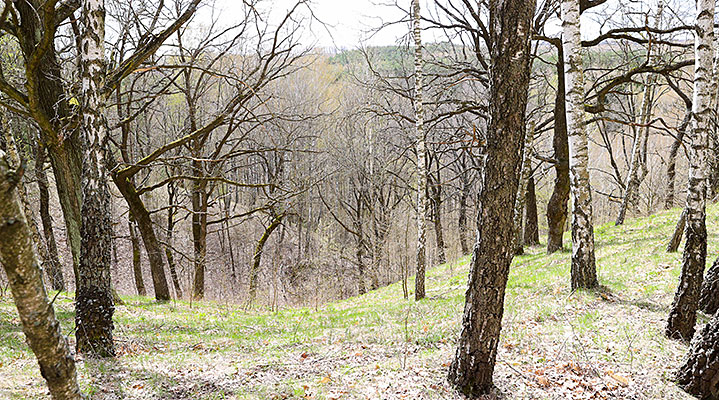
Mozyr received the poetic name of “the city on seven hills" for a reason. The city terrain has a very contrasting relief: from deep ravines to steep hills. Such a landscape was formed as a result of glaciers retreat. The Belarusian Polesie is predominantly flat. Meanwhile, the hills of the Mozyr ridge reach absolute marks of 220.7m, and slopes can be as steep as 30°. The Mozyr ravines reserve was set up in 1986 to preserve the unique ecosystem. It begins right in the city, with streets running through ravines. An eco-trail introduces tourists to local flora as many species of plants, including more than a hundred medicinal herbs, grow alongside it. Huge boulders can be found at the bottom of ravines. Meanwhile, the tops provide stunning views of the Pripyat valley.
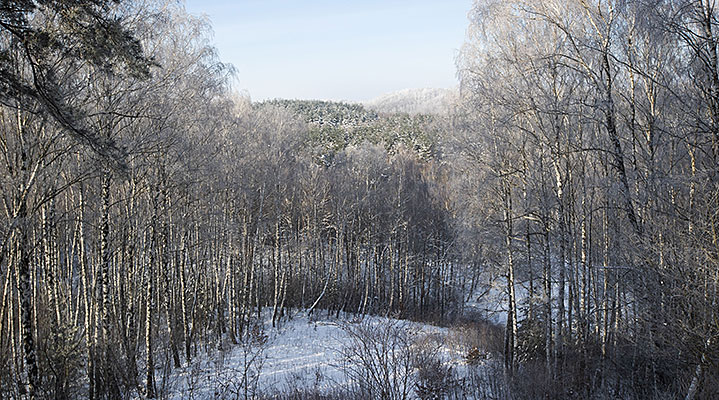
Lots of trees, mainly maple, birch, aspen, linden and alder, have been planted to reinforce the slopes in order to avoid landslides. But there are also beech, larch and fir trees. The reserve also has relict Cimicifuga. This plant listed in the Red Book list of endangered species, can be found only here and in Belovezhskaya Pushcha.
Castle Hill
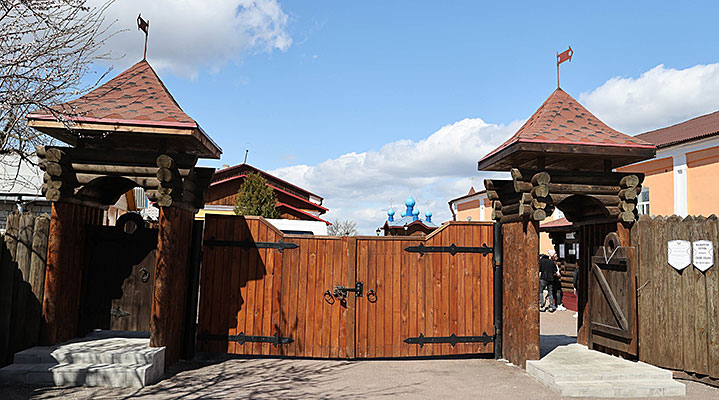
No medieval city could do without defensive fortifications. Mozyr, too, had a castle at the heart of it. The first reliable information about the fortress dates back to 1519: then Grand Duke Sigismund I sold it to Albrecht Gashtold "for 1,500 kopas of groszes...". The description of the castle that has survived describes it as a wooden castle with three towers and walls more than a meter thick. The towers were connected by gorodnias as high as 10m. There was a temple of St. Saviour, which was why the mountain was called Spasskaya (St Savior) for a long time.
The castle witnessed a lot of wars, was destroyed and rebuilt. The last mention of the fortress dates back to 1676. After one of the battles, Mozyr Castle was burned down and never restored.
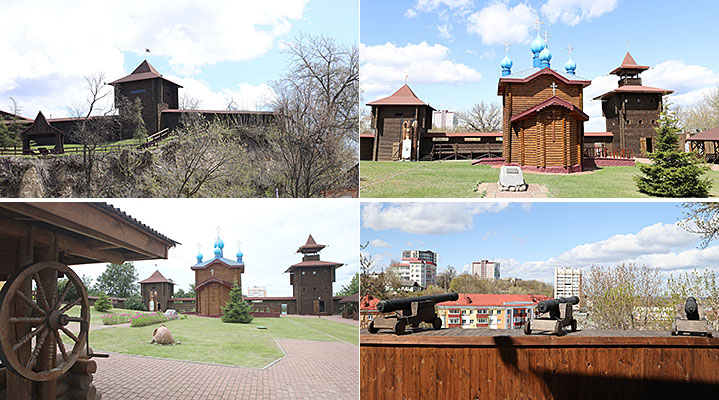
The ancient settlement was restored by the 850th anniversary of the city. Now Mozyr has a stylized wooden castle, which has become a place of attraction for local residents and visitors to the city. It also houses a museum of local lore, cafes, and sites for artisans.
Where: 8 Gora Kommunarov Street
Mozyr United Local History Museum
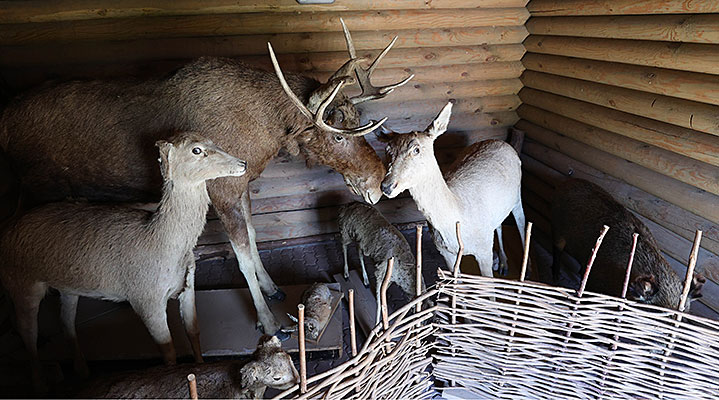
Founded in 1948, the local history museum chronicles the rich past and celebrates the unique culture of Mozyr Poleshuks. The museum also conducts ethnic and cultural studies. The museum has expositions dedicated to nature, archeology, and war history of the region. In addition to the Mozyr Castle architectural model, the museum includes an exhibition hall, a museum-workshop of ceramic artist Nikolai Pushkar, a folk culture museum Paleskaya Veda, a partisan glory museum in the village of Romanovka.
Where: 8 Gora Kommunarov Street
Saint Michael the Archangel Cathedral
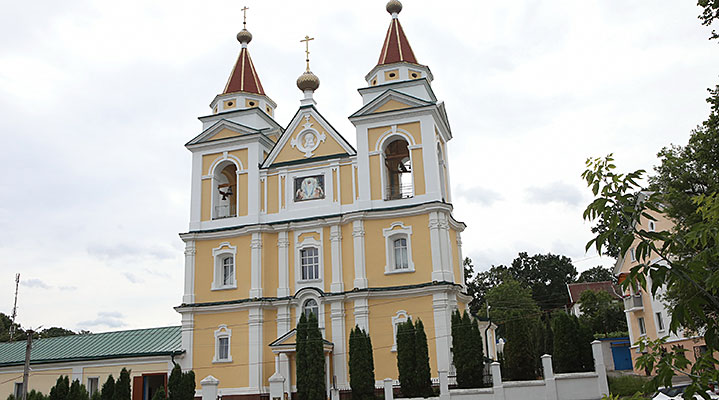
Saint Michael the Archangel Cathedral is located not far from the former hillfort in Mozyr downtown. The history of the cathedral began in 1615 when Sigismund III Vasa founded a Bernardine monastery in Mozyr. Three years later, a small wooden church was attached to the monastery. In 1645, retired officer Stefan Lozko granted part of the hill opposite the Mozyr Castle to the brethren and initiated the construction of a stone monastery. Unfortunately, a few years later the monastery, like the entire town, was destroyed during another war. Mozyr had to rise from the ashes again.
In 1745, representatives of the Oskierko noble family decided to build a new Bernardine monastery from stone, with a majestic brick temple in the center. After the uprising of 1830-1831, the monastery was shut down; the building housed a chancellery and a hospital. The building was granted to the Orthodox Church, which consecrated it in honor of the Holy Archangel Michael.
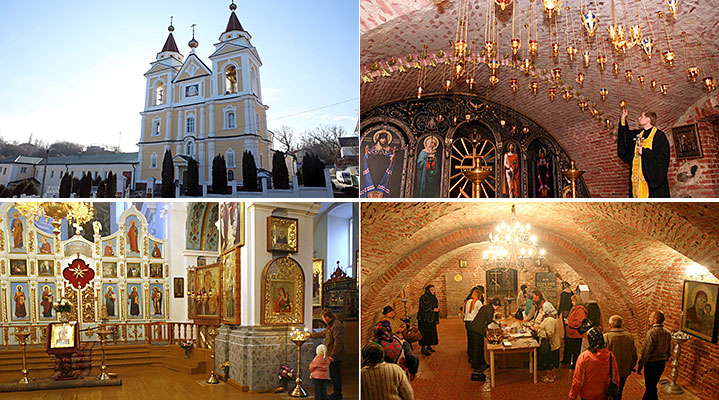
The cathedral was lucky enough to survive the First World War and the revolutions of the early 20th century. However, during four years - from 1937 to 1941 – the cathedral was used as a regional NKVD prison. According to some sources, more than 2,000 people were executed here. In 1941 the temple was reopened to parishioners. In 1952 the church was repaired. Forty years later, after Belarus declared independence, the cathedral became the center of the revived Turov Eparchy.
The church is a rectangular building divided into three naves inside. The main facade has three tiers with two bell towers on the sides. The crypt of the cathedral houses Belarus’ only temple-museum of political repressions.
Where: 16 Komsomolskaya Street
Saint Michael the Archangel Catholic Church
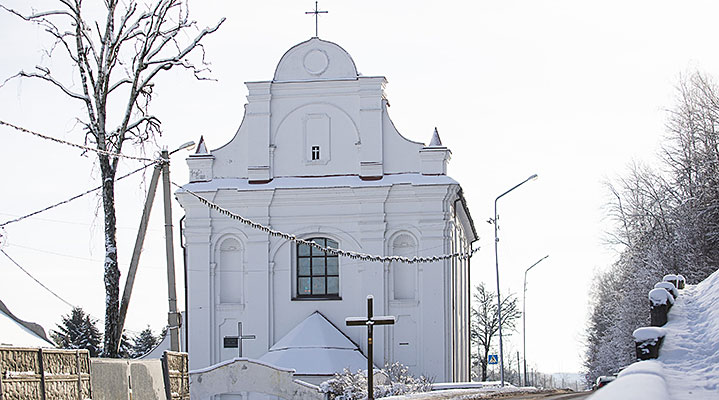
There were only three monasteries and convents of the Order of Cistercians in the territory of Belarus, and two of them (a monastery and a convent) were located in Mozyr, in the Kimbarovka Forest. The convent of the Cistercians was founded on the banks of the Pripyat River in 1610. Several outbuildings of the convent and the Saint Michael the Archangel Church have survived. The church was built from brick in the late Baroque style in 1743-1745 to replace the old wooden buildings erected by the order of King Sigismund II Augustus.
The Catholic church is a one-nave building with a three-sided apse. It is covered with a high gable roof. The main facade is divided into three parts by high pilasters, a belt cornice and fancy niches. The main entrance passes through a low multi-faceted forechurch. Initially, a residential U-shaped building was attached to the church from the southeast.
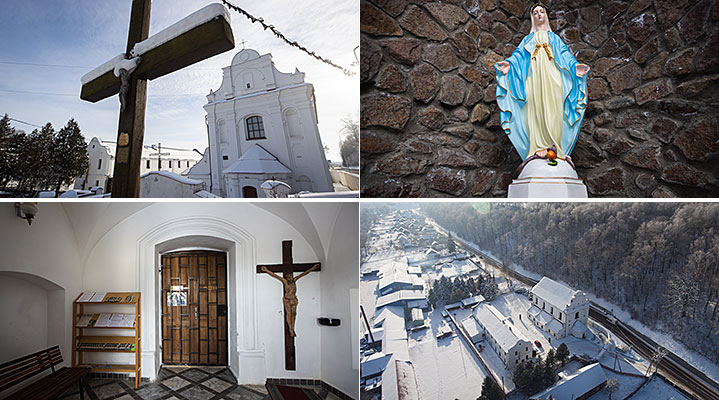
The Cistercian convent was shut down in 1883, five years later the buildings of the convent were transferred to the Orthodox Church. In the late 19th century, the church was reconstructed, with a belfry and stone galleries on the sides added to it. The convent was used as military barracks, an orphanage. Until the 1990s, the church housed a music school. After that, the temple was returned to the Catholic Church and restored.
Where: 93A Gogola Street
Mozyr Tram
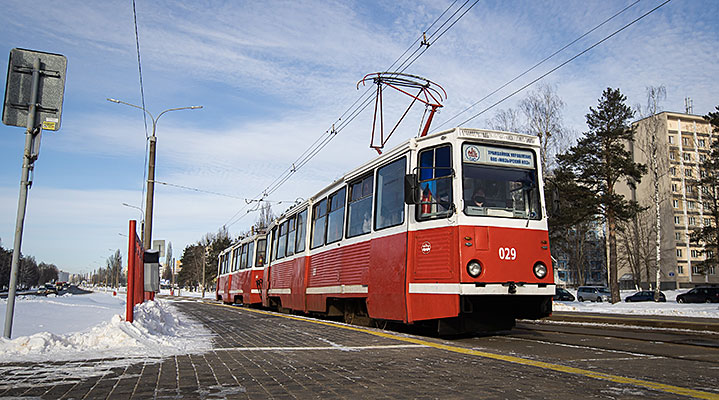
Tram may not seem like the most obvious landmark. However, Mozyr is Belarus’ only district center with its own tram system. This eco-friendly mode of transport is available only in four cities of the country: Minsk, Vitebsk, Mozyr, and Novopolotsk. Launched in 1988, the Mozyr tram service is the youngest one.
The city’s tramway network is 21km long. It takes 40 minutes to cover the route from the Depot to Mozyr Oil Refinery. The service links the city with the industrial zone which is home to Mozyr CHP plant, Ethanol Plant, and Mozyr Oil Refinery. Since the service is industry-sponsored, its main function is to deliver workers to Mozyr Oil Refinery. The service is also available for urban dwellers and residents of the villages located between Mozyr and the refinery. Some two million passengers use the service every year.
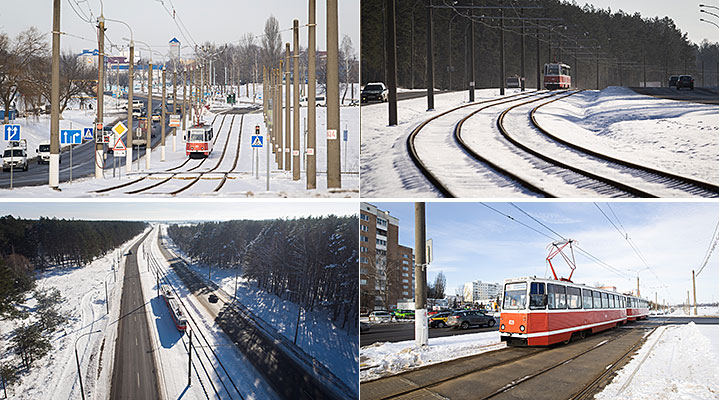
Most of the route runs outside the city, offering scenic delights. Out of the city, the tram travels at the speed of up to 60km/h. The rolling stock (a total of 47 passenger cars) is made up entirely of KTM-5 trams. There are only coupled cars in the tram fleet, which may not be found anywhere else in the former Soviet Union countries.
The tram route runs through the hilly terrain of the city and its surroundings, with tram cars easily overcoming all the ascents and descents. Plans are in place to extend the tram route, to build two lines along Internatsionalnaya and Sotsialisticheskaya streets. The total length of the route may increase to 34.5km.
Mound of Glory
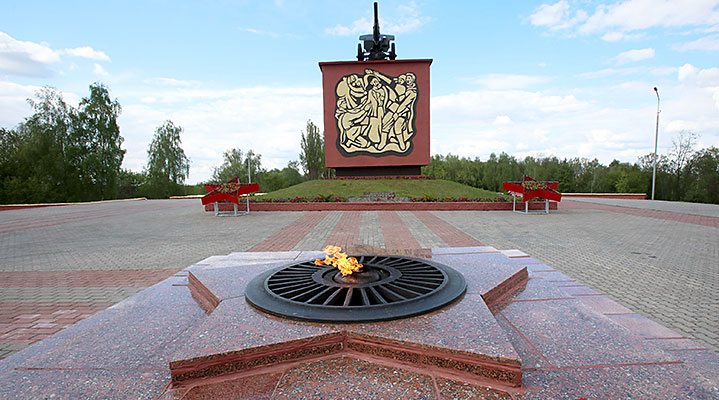
The Great Patriotic War was a time of great ordeals for Belarus, and there was no place across the country which was left unaffected. Mozyr was no exception. The city was under occupation for 875 days - from 22 August 1941 to 14 January 1944. On that day, the troops of the First Belarusian Front, with the support of partisans, defeated the German army, retaking Mozyr and Kalinkovichi. The first object of the Mound of Glory memorial complex - a huge cube on a granite pedestal featuring Howitzer M1938 - was unveiled to mark the 23rd anniversary of the liberation of the city and commemorate those killed on the battlefields of the bloodiest war in human history. There is an epitaph on the cube reading “To the Motherland Defenders from Mozyr Residents”. On 7 November 1967 the Mound was complemented with a 45-meter obelisk and an eternal flame.
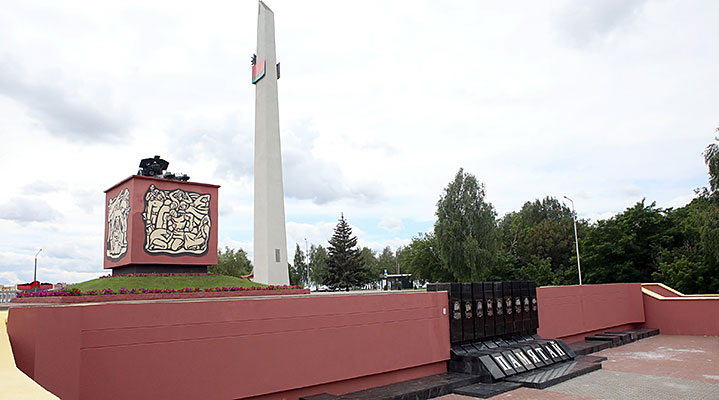
Ten years later, the memorial got its modern looks. The remains of soldiers and partisans who died during the liberation of Mozyr were solemnly reburied near the memorial. A monument to the Leningrad siege survivors and defenders was erected on the Mound of Glory in 2011. A year later it was decided to perpetuate the memory of peacekeeping soldiers who died during the war in Afghanistan. A capsule with Afghan soil was buried near the memorial. There is also military hardware on open-air display near the memorial.
Where: Ryzhkova Street
Mozyr Brewery
Mozyr Brewery is located on the bank of the Pripyat River opposite the city park. The factory brewed its first beer in 1885. One of the owners ordered branded bottles from St. Petersburg. Beer production was halted several times. For example, in 1917 the brewery began salting fish for the needs of the army. The brewery resumed beer production during peaceful years. In 1925 the brewery produced three beer varieties: Bavarskoye, Pilzenskoye and Margovskoye. In the late 1920s the brewery was made a state-owned company. After the Great Patriotic War the factory underwent a major makeover, increasing its capacities and expanding its lineup to five brands of beer and ten types of soft drinks. In 2004, after reorganization, Mozyr Brewery switched to the production of mead and sbiten beverages.
The factory, with some of the buildings erected more than 100 years ago, undoubtedly attracts the attention of city visitors. Built in the early 20th century, the premises made of red brick and complemented with white elements are sometimes used as film sets.
Where: 180 Sovetskaya Street







 print version
print version make home page
make home page add to bookmarks
add to bookmarks
